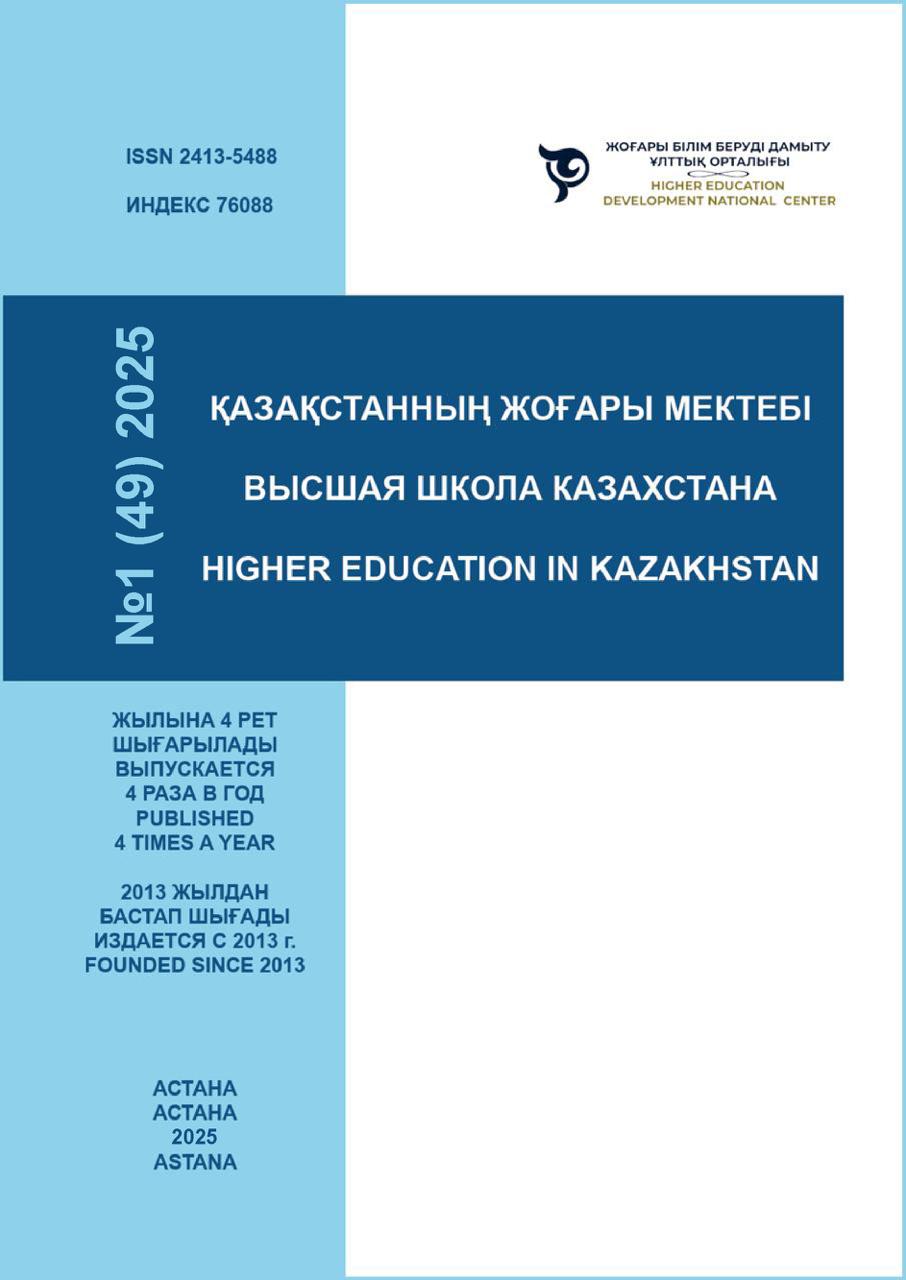SYLLABUS DEVELOPMENT FOR TEACHER INPUT IN STUDENT-CENTERED LEARNING
DOI:
https://doi.org/10.59787/2413-5488-2025-49-1-115-128Abstract
Modern didactic practice called Student-Centered Learning (SCL) promotes a learning process that is flexible, adaptable to individual student needs. This paper offers an examination of general education cycle discipline syllabi within the framework of SCL, focusing on the customization of syllabi to meet student needs and tracing their developmental trajectory. Employing both bibliographic and content analysis methodologies, this study illuminates the distinctive features and evolutionary patterns of SCL syllabi. Notably, it identifies a wide array of assignment formats and types evident in syllabi sourced from the Department of General Education Disciplines. The syllabi are a key document in discipline-based teaching, regarding instructions, course content, and student teaching and learning dynamics. The findings of the study help deepen our comprehension of syllabus evolution within the SCL paradigm and provide valuable insights for educational practitioners and curriculum developers.
References
Adipat, S., Laksana, K., Busayanon, K., Asawasowan, A., & Adipat, B. (2021). Engaging students in the learning process with game-based learning: The fundamental concepts. International Journal of Technology in Education (IJTE), 4(3), 542–552. https://doi.org/10.46328/ijte.169
Apperson, J. M., Laws, E. L., & Scepansky, J. A. (2008); Daniels, L. M., Kane, M. J., & Rosario, M. (2007); Nouri, J. & Shahid, A. (2005, 2008); Szabo, A., & Hastings, N. G. (2000). In Condliffe, B. (2017). Active learning strategies and their use in higher education.
Aria, M., & Cuccurullo, C. (2017). Bibliometrix: An R-tool for comprehensive science mapping analysis. Journal of Informetrics, 11(4), 959–975.
Astana IT University. (2022). Academic policy of LLP “Astana IT University.”
Astana IT University. (n.d.). About. Retrieved from https://learn.astanait.edu.kz/about
Boctor, L. (2013). Active-learning strategies: The use of a game to reinforce learning in nursing education. A case study. Nurse Education in Practice, 13(2), 96–100. https://doi.org/10.1016/j.nepr.2012.07.010
Brown, K. (2004). Technology: Building interaction. TechTrends, 48(5), 36–38.
Degago, A. T., & Kaino, L. M. (2015). Towards student-centred conceptions of teaching: The case of four Ethiopian universities. Teaching in Higher Education, 20(5), 493–505. https://doi.org/10.1080/13562517.2015.1020779
Grimm, S. D. (2015). Learning logs: Incorporating writing-to-learn assignments into accounting courses. Issues in Accounting Education, 30(2), 79–104.
Gutiérrez-Salcedo, M., Martínez, M. Á., Moral-Munoz, J. A., Herrera-Viedma, E., & Cobo, M. J. (2018). Some bibliometric procedures for analyzing and evaluating research fields. Applied Intelligence, 48, 1275–1287.
Haiying, L. (2023). A critical discourse analysis of medical English course syllabuses. Journal of Language Teaching and Research, 14(4), 865–870. https://doi.org/10.17507/jltr.1404.02
Hwang, G. J., Wu, P. H., Chen, C. C., & Tu, N. T. (2016). Effects of an augmented reality-based, educational game on students’ learning achievements and attitudes in real-world observations. Interactive Learning Environments, 24(8), 1895–1906. https://doi.org/10.1080/10494820.2015.1057747
Lojdová, K. (2019). Socialization of a student teacher on teaching practice into the discursive community of the classroom: Between a teacher-centered and a learner-centered approach. Learning, Culture and Social Interaction, 22, 100314. https://doi.org/10.1016/j.lcsi.2019.05.001
Ministry of Education of the Republic of Kazakhstan. (2022). On approval of state compulsory standards for preschool education and training, primary, basic secondary and general secondary, technical and vocational, and post-secondary education: Order No. 348 dated August 3, 2022. Ministry of Justice of the Republic of Kazakhstan. https://adilet.zan.kz/rus/docs/V2200029031
Mukherjee, D., Lim, W. M., Kumar, S., & Donthu, N. (2022). Guidelines for advancing theory and practice through bibliometric research. Journal of Business Research, 148, 101–115.
Richmond, A. S., Morgan, R. K., Slattery, J. M., Mitchell, N. G., & Cooper, A. G. (2018). Project syllabus: An exploratory study of learner-centered syllabi. Teaching of Psychology, 46(1), 6–15. https://doi.org/10.1177/0098628318816129
Sugahara, S., & Boland, G. (2006). The effectiveness of PowerPoint presentations in the accounting classroom. Accounting Education, 15(4), 391–403.
Sugeng, B., & Suryan, A. W. (n.d.). Presentation-based learning and peer evaluation to enhance active learning and self-confidence in the financial management classroom. Retrieved from https://www.researchgate.net/publication/326802887_Presentation-based_learning_and_peer_evaluation_to_enhance_active_learning_and_self-confidence_in_financial_management_classroom
Tang, K. H. D. (2023). Gamification to improve participation in an environmental science course: An educator’s reflection. Acta Pedagogia Asiana, 2(2), 54–63.
Tang, K. H. D. (2023). Student-centered approach in teaching and learning: What does it really mean? Acta Pedagogia Asiana. https://doi.org/10.53623/apga.v2i2.218
Vlasenko, K., et al. (2022). Project-based learning in higher education. Journal of Physics: Conference Series, 2288, 012019. https://doi.org/10.1088/1742-6596/2288/1/012019
Žerovnik, A., & Nančovska Šerbec, I. (Eds.). (2013). Project-based learning in higher education.

Downloads
Published
Issue
Section
License
Copyright (c) 2025 Scientific and analytical journal "Higher school of Kazakhstan"

This work is licensed under a Creative Commons Attribution-NonCommercial 4.0 International License.













